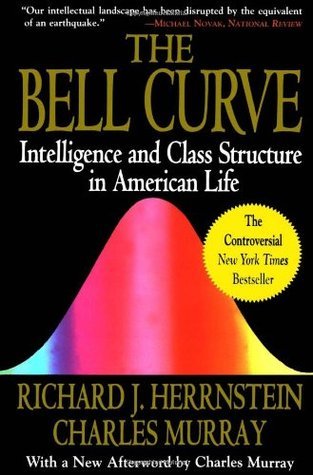The Bell Curve Book Summary
Intelligence and Class Structure in American Life
TL;DR
The Bell Curve explores the relationship between intelligence, socioeconomic status, and public policy, arguing that intelligence significantly impacts societal outcomes and advocating for strategies to address these disparities.
What is The Bell Curve about
Published in 1994, The Bell Curve by Richard J. Herrnstein and Charles Murray delves into the correlation between intelligence and class structure within American society. The authors argue that variations in IQ contribute to significant differences in social outcomes, including crime rates, welfare dependency, and educational attainment. They propose that these disparities require careful public policy interventions to mitigate their impact on society. The book sparked considerable debate due to its controversial implications about race, intelligence, and the potential for societal stratification based on cognitive abilities.
The Bell Curve 6 Key Takeaways
Intelligence as a Predictor
The authors argue that intelligence is a strong predictor of socioeconomic status, with higher IQs correlating with greater success in education and career.
Distribution of Intelligence
Intelligence test results follow a normal distribution, with most scores clustering around the average, highlighting significant portions of society that fall below the average IQ.
Impact of Socioeconomic Factors
The book explores how socioeconomic status affects cognitive development, suggesting that children from disadvantaged backgrounds often score lower on IQ tests.
Public Policy Recommendations
Herrnstein and Murray advocate for specific public policies aimed at addressing the consequences of intelligence disparities, such as educational reforms and welfare adjustments.
Controversy over Race and Intelligence
The authors discuss differences in average IQ scores among racial groups, igniting debates about the role of genetics versus environment in intelligence.
Educational Implications
The book suggests that educational systems should account for cognitive differences among students, promoting tailored approaches rather than one-size-fits-all solutions.
Top The Bell Curve Quotes
- Intelligence is the most important predictor of personal and social outcomes.
- The challenge for society is not just to acknowledge these differences but to address the implications of them.
- We cannot afford to ignore the role of intelligence in shaping the future of our communities.
Who should read The Bell Curve?
The Bell Curve is aimed at readers interested in psychology, sociology, and public policy, particularly those seeking to understand the complex interplay between intelligence and societal outcomes. It offers insights for educators, policymakers, and anyone engaged in discussions about education reform and social equity.
The Bell Curve Best Reviews
- The Bell Curve is a thought-provoking yet controversial examination of the interplay between intelligence and societal outcomes. Critics argue that its conclusions promote a determinism that overlooks social and economic factors.
- Publishers Weekly praised the book for its detailed analysis of data on intelligence and class, though it noted that the provocative nature of its arguments would likely invite criticism.
- The New York Times review highlighted the book's rigorous research methodology but cautioned that its societal implications could lead to divisive interpretations.
People also liked these summaries
The Bell Curve FAQs
What is the main argument of The Bell Curve?
The main argument of The Bell Curve is that intelligence significantly influences socioeconomic status and other life outcomes, necessitating public policy interventions to address the disparities.
Did The Bell Curve face any criticism?
Yes, The Bell Curve has faced substantial criticism for its interpretations of race and intelligence, with many arguing that it oversimplifies complex social issues and promotes deterministic views.
How has The Bell Curve influenced public policy?
The Bell Curve has influenced discussions on educational policy, welfare reform, and social stratification, prompting policymakers to consider the implications of intelligence research in their strategies.
